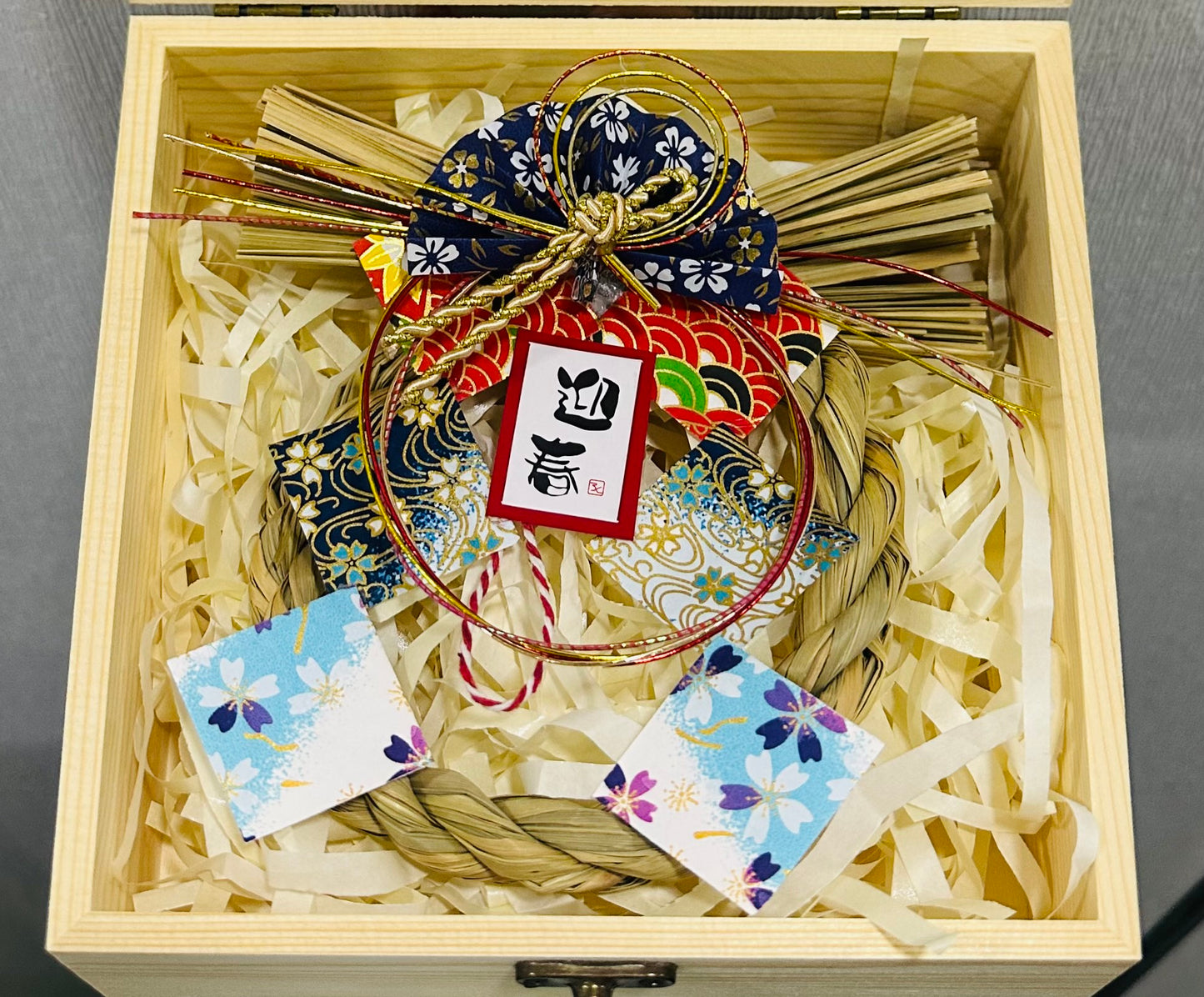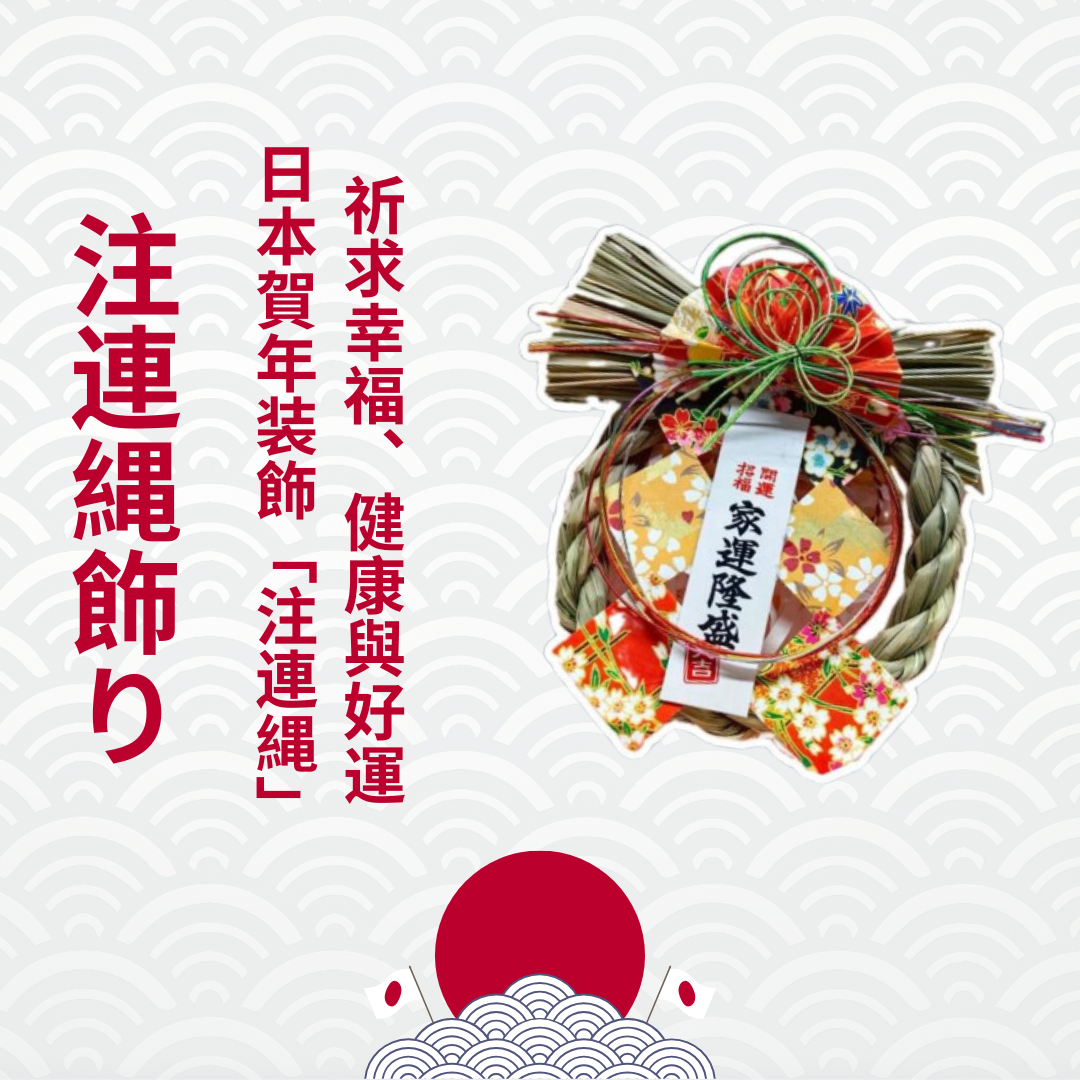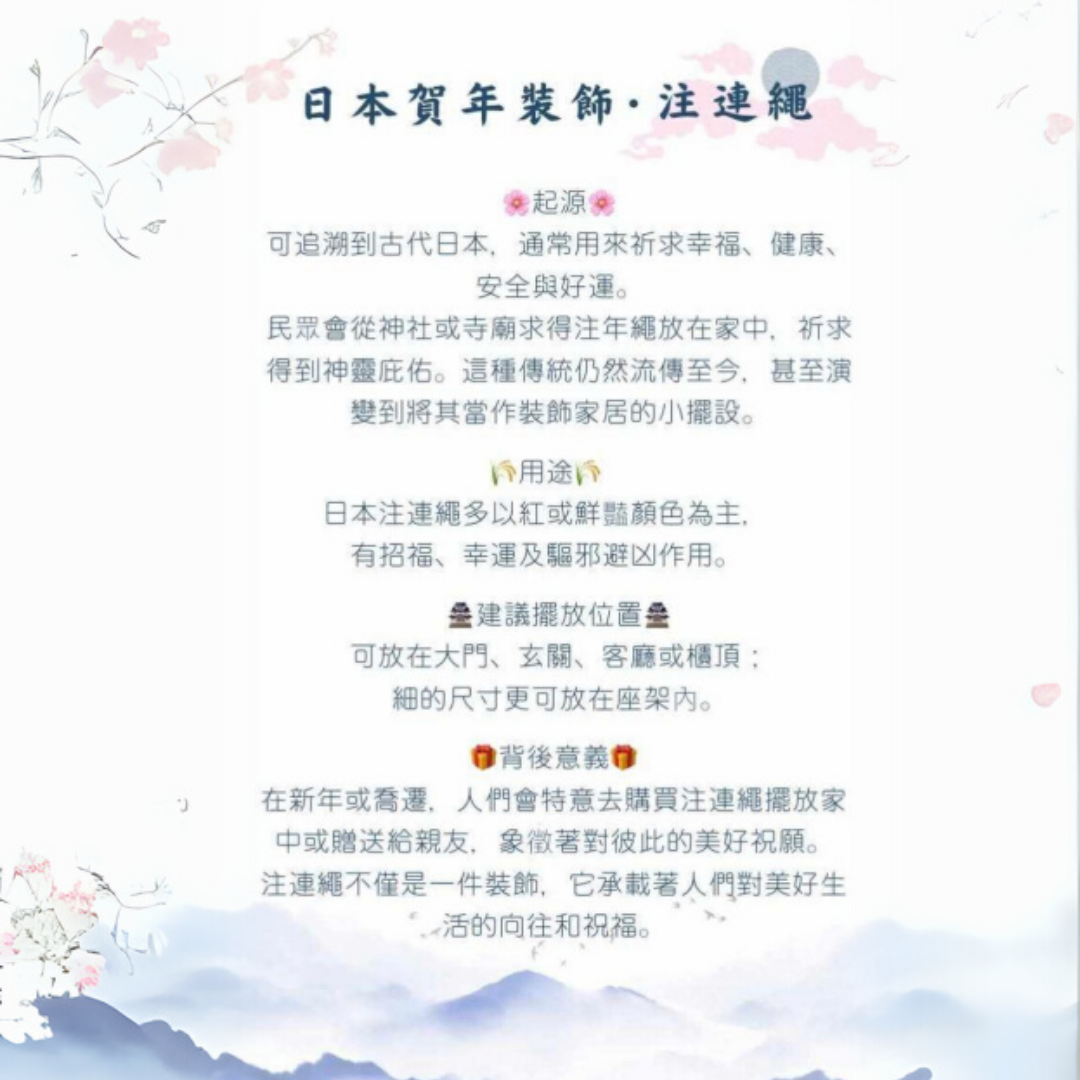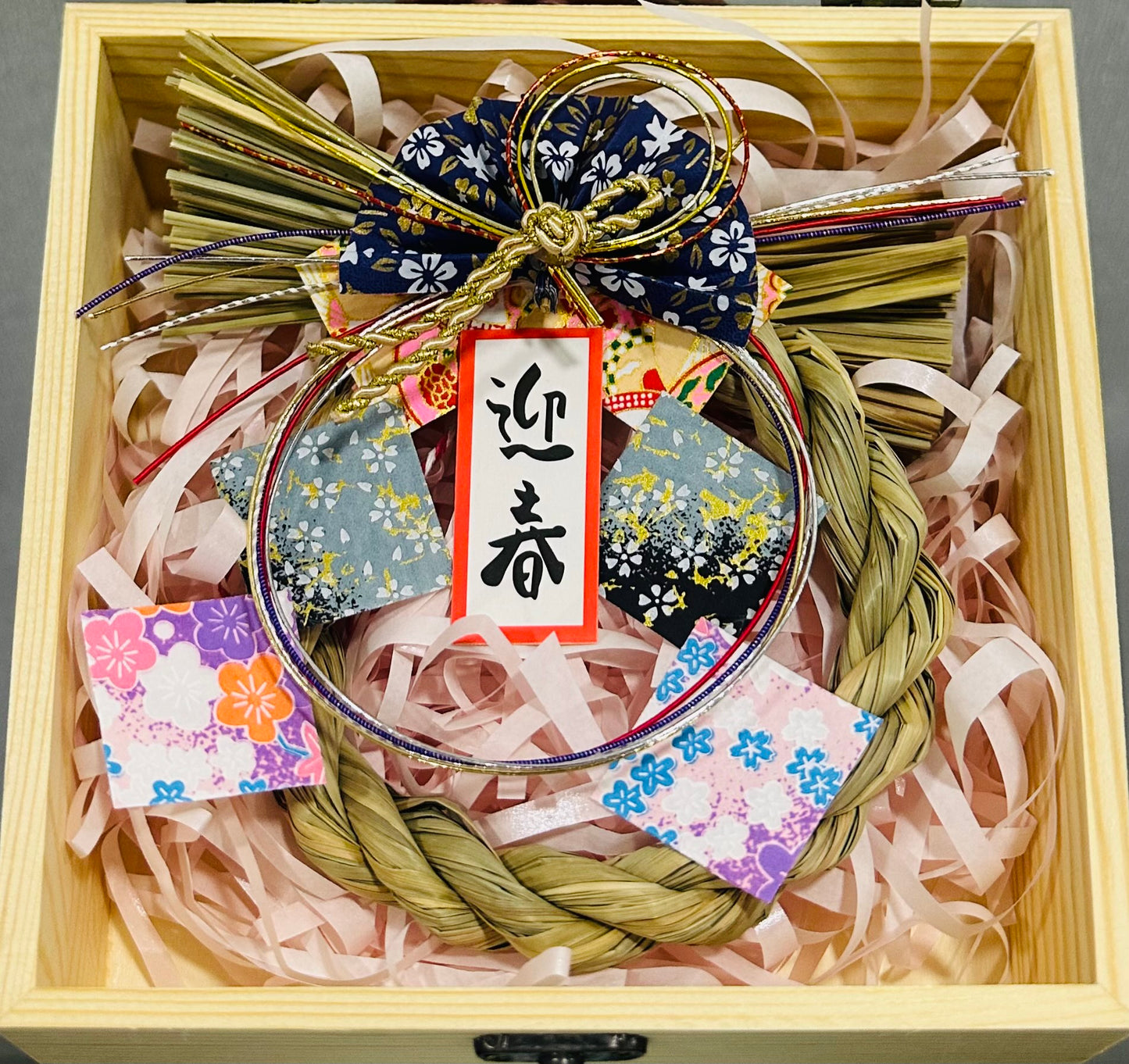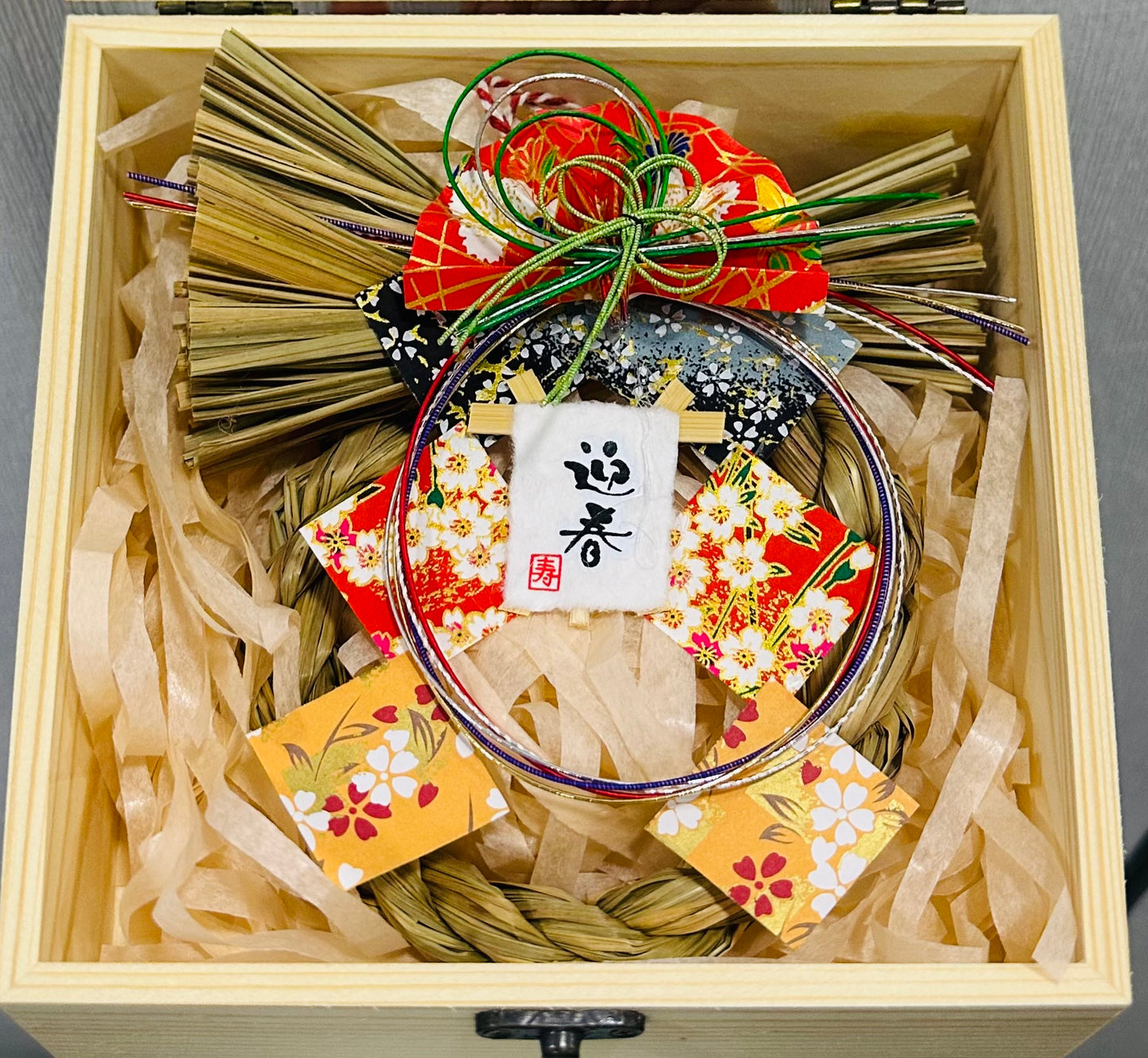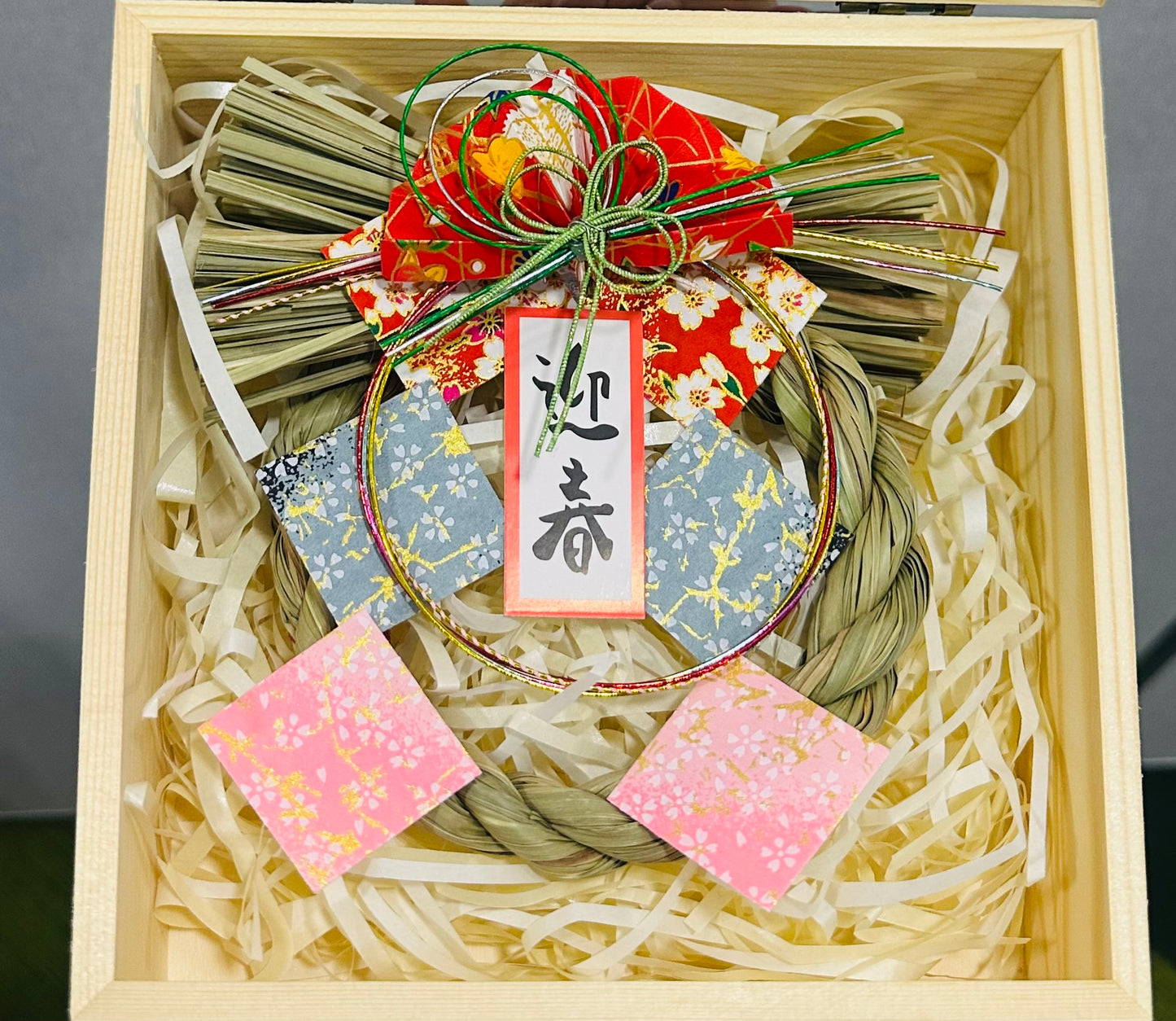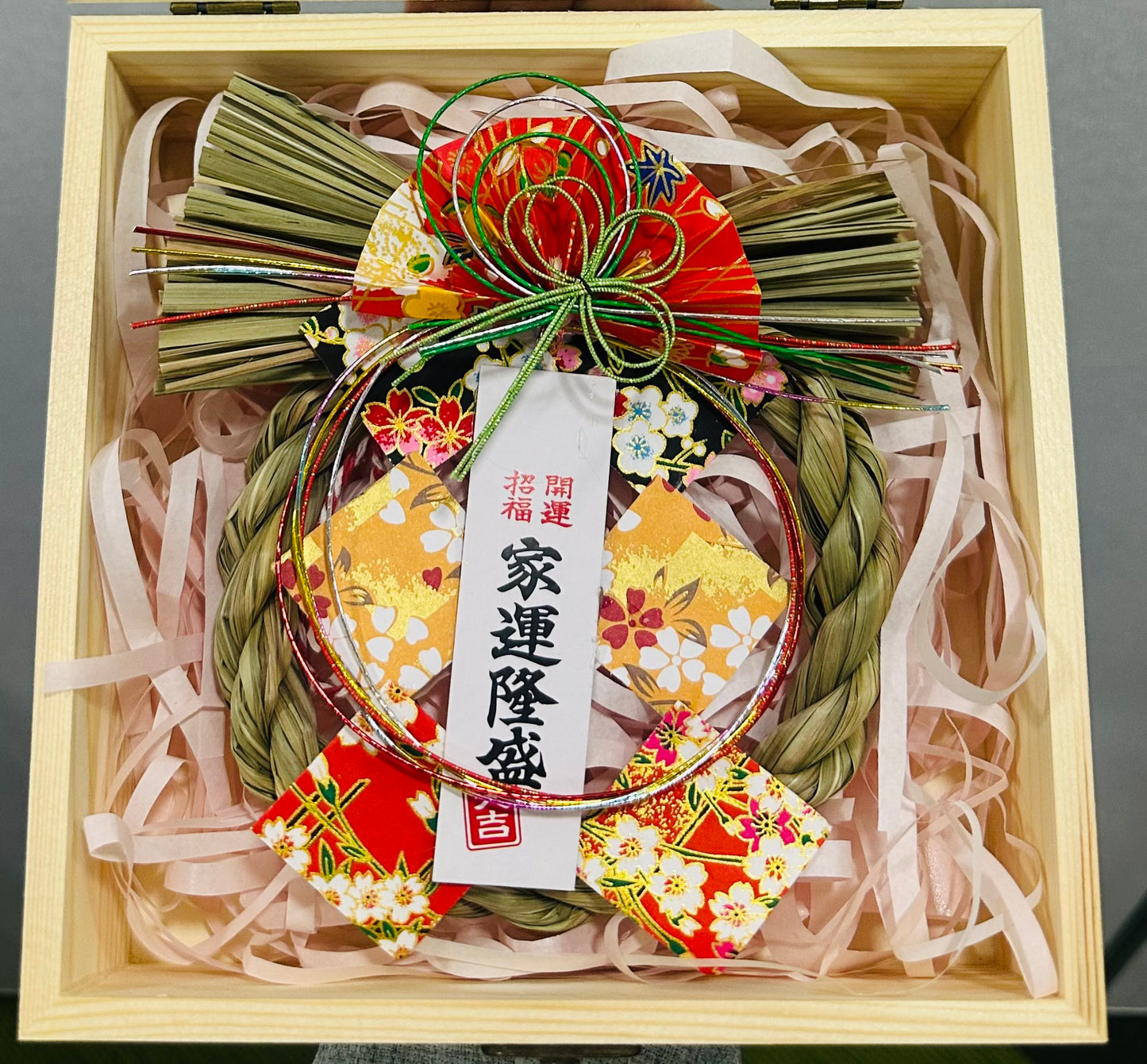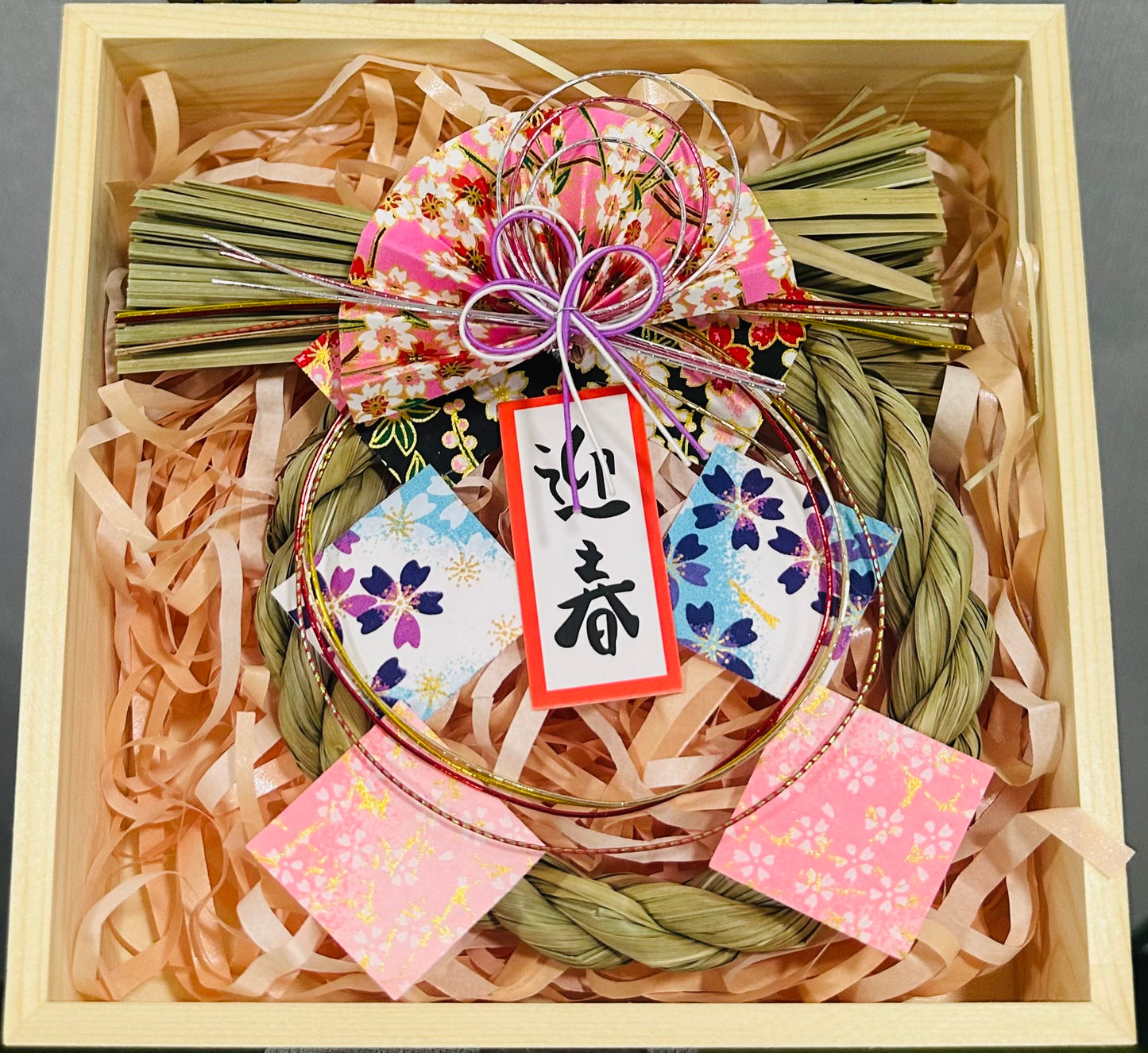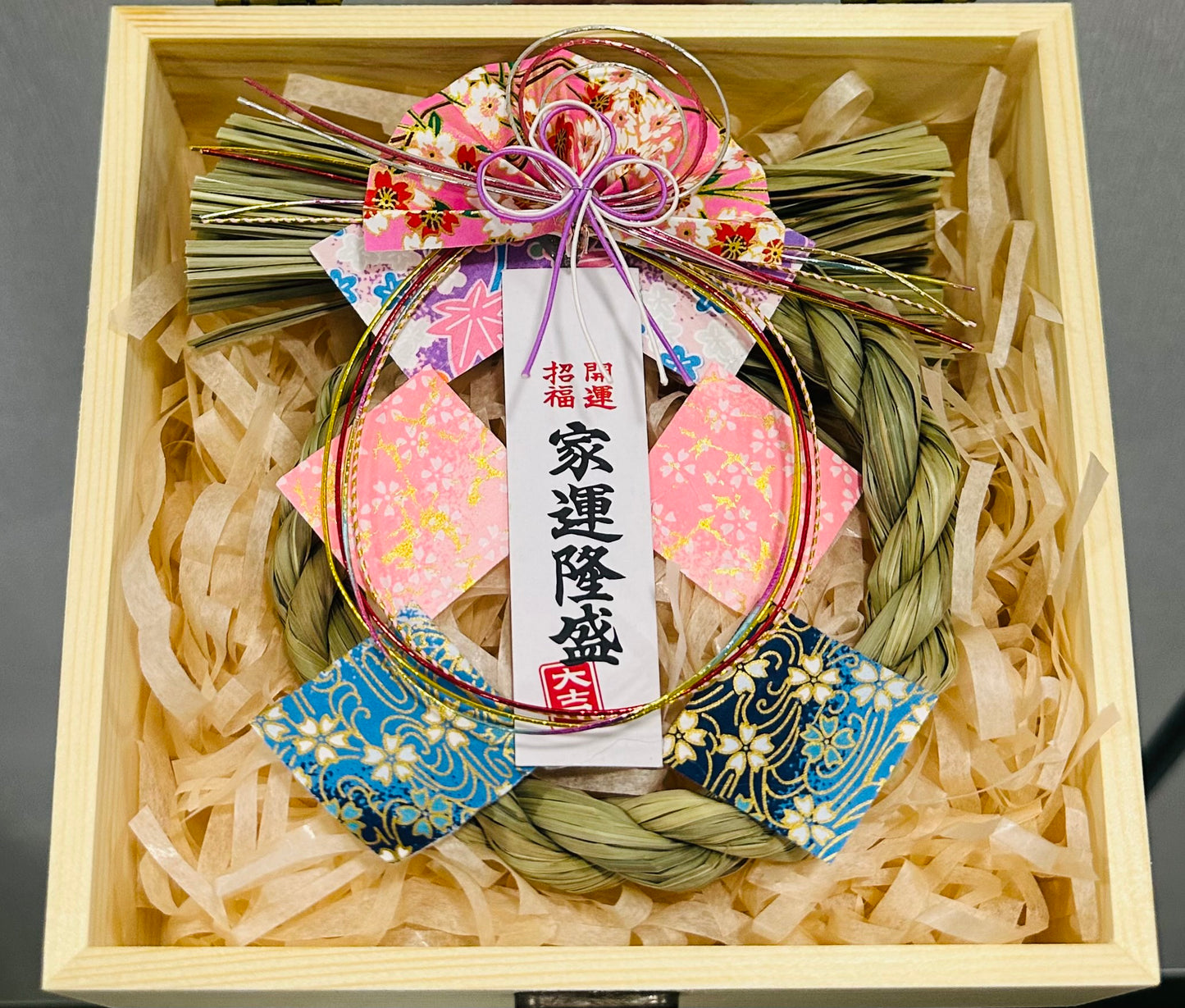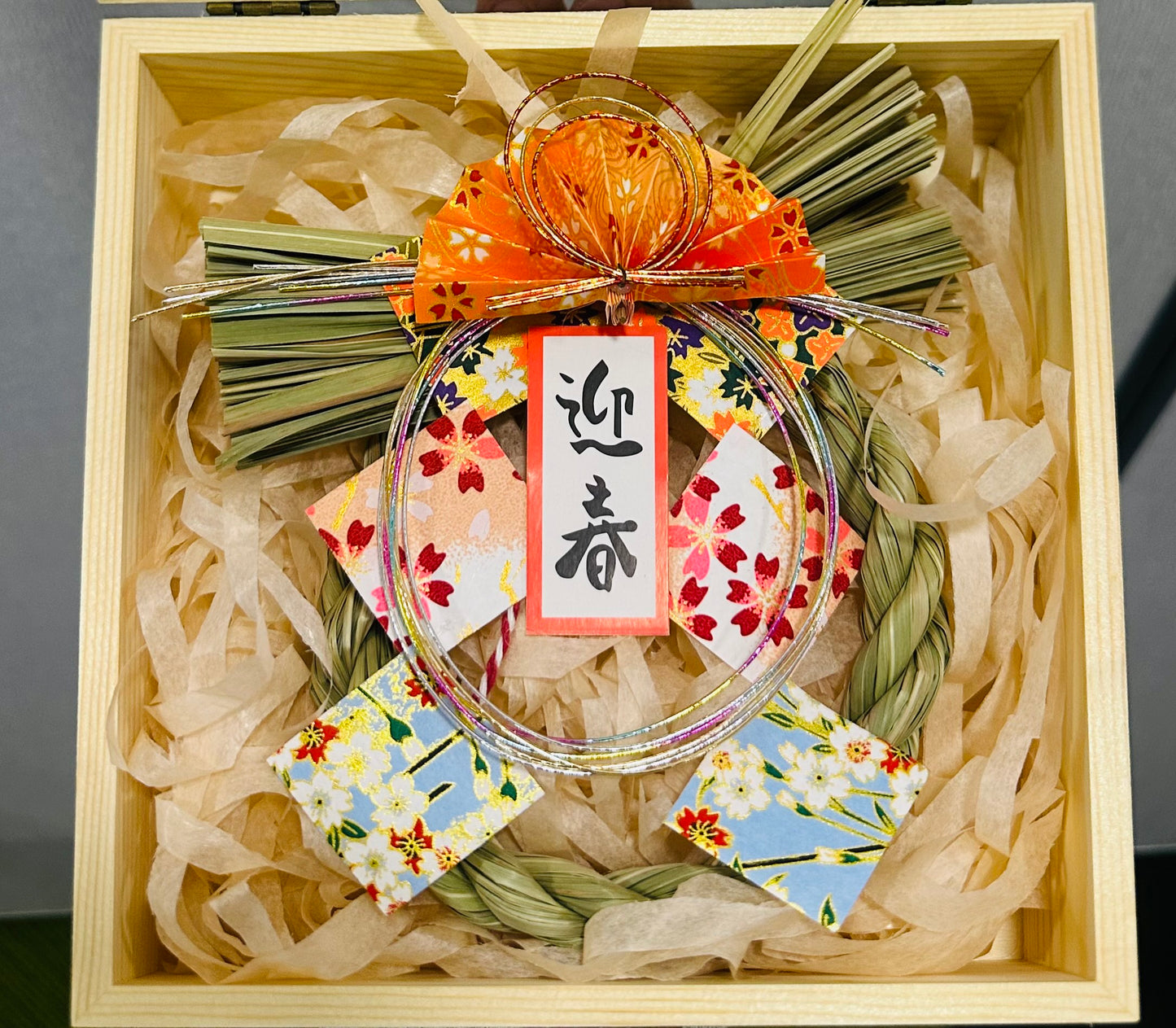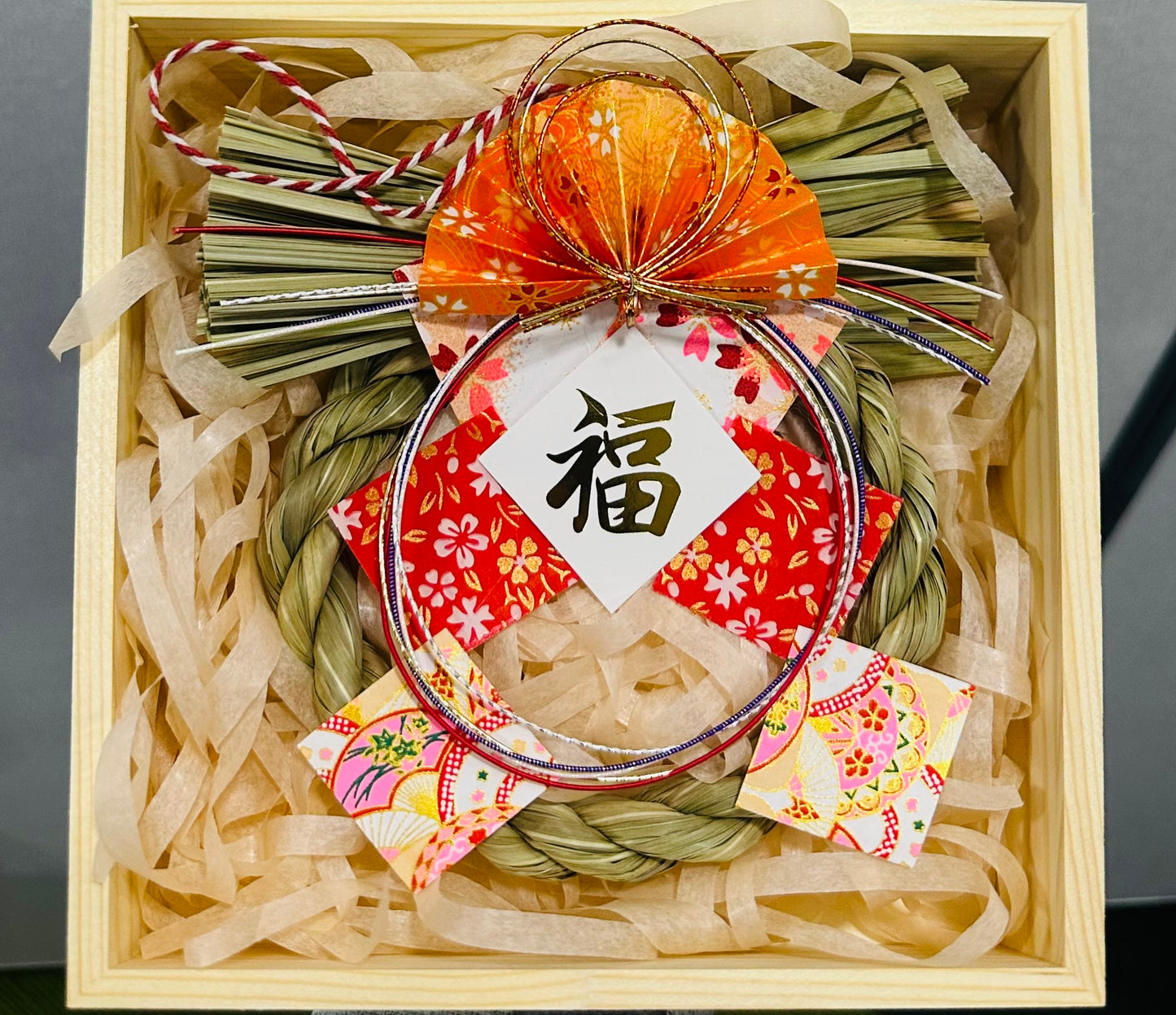KOUBUTSU
Japanese New Year's decoration pray for happiness, health and good luck "Shirenyu"
Japanese New Year's decoration pray for happiness, health and good luck "Shirenyu"
Couldn't load pickup availability
Japanese New Year decorations: Decoration and cultural significance of meanings
Japanese New Year which is a special day to welcome the "Year God" to your home. It is said that the Year God will visit every household on New Year's Day to bring happiness, health and a good harvest in the new year. As part of Japanese New Year decorations, shuriken ropes carry profound cultural and mythological connotations. Its origins can be traced back to the "Legend of Amaterasu" in Japanese mythology. Amaterasu plunged the world into darkness because he lived in seclusion in "Ama Iwato". When she walked out of Iwato, in order to prevent her from living in seclusion again, people sealed Iwato with a rope, symbolizing the boundary between the divine realm and the mortal world. Nowadays, the rope has become an important decoration to welcome the New Year God. It has the function of preventing unclean things from entering the divine realm, and conveys blessings and prayers for the New Year. The "しめ" in the Japanese word "しめ縄" for note rope means the place occupied by God, emphasizing its sacredness. It is often listed as the three major New Year decorations along with "Kadomatsu" and "Mirror Mochi", symbolizing welcoming the New Year God and praying for family happiness and health. Every year after the New Year, people will burn the old shrine rope at the "どんど焼き" or "Sagicho" festival to send the god of the year back to heaven. However, in recent years, environmentally friendly reusable cords and decorations have become increasingly popular. These decorations can also be stored properly after the Matsunouchi is finished and can be used again the following year.
The best time to prepare for New Year decorations starts from the "New Year's Eve" on December 13th. This day is also the day for the "Meishu" cleaning. After cleaning, you can start to decorate. However, December 29th is often avoided because its pronunciation (にじゅうく) is the same as "double bitterness", while December 31st is considered to be a night of unlucky decorations. In contrast, December 28 is regarded as an auspicious day because "eight" has the meaning of "Suehiro", which means that things become wider at the end and enter a better state. It is suitable for hanging zodiac ropes and other New Year decorations. After the New Year, the period when decorations are put up is called "Matsunouchi", and its length varies depending on the region. In the Kanto region, it is generally until January 7th, and in the Kansai region, it is extended to January 15th. After the period is over, the decorations in the home will be removed, and the ropes will usually be placed on altars or entrances, symbolizing welcoming the gods and protecting the family. When placing it on the altar, be careful not to cover the guardian on the altar. The rope carries not only cultural traditions, but also blessings and expectations for the new year. Whether it is handmade or purchased ready-made, you should be reverent and decorate it at the appropriate time to welcome the happiness and hope of the New Year.
Each rope product comes with a beautiful wooden box and an introduction. (see picture below)
You can write blessing words on the back of the introduction and give it to relatives and friends. (see picture below)
Product Line Up: Small size: 12cm, Large size: 15cm
Wooden box size: thin: 18x18x7cm, large: 20x20x12cm
注連縄 #しめ縄 #天照大神 #天岩戶 #あまのいはと #門松 #鏡餅 #年神 #どんど焼き #左義長祭 #裝飾品 #正月事始め #しょうがつことはじめ #煤払い #すすばらい #二重苦 #にじゅうく #末広がり #松之內 #神壇 #玄關 #御守 #環保 #新年 #佈置 #希望 #幸福 #神域 #凡間 #お正月
share
